Quick THREAD on current England situation:
TLDR overall cases falling but case positivity pretty flat... cases rising in school children but falling in young adults.
Hospitalisations remain relatively high. Simple things now will prevent things getting worse. 1/10
TLDR overall cases falling but case positivity pretty flat... cases rising in school children but falling in young adults.
Hospitalisations remain relatively high. Simple things now will prevent things getting worse. 1/10
First off - some excellent news: vaccine uptake in 16/17 yr olds is very good and many 20-30 year olds are now fully vaccinated. I have no doubt this is having a big impact on cases! 2/10 
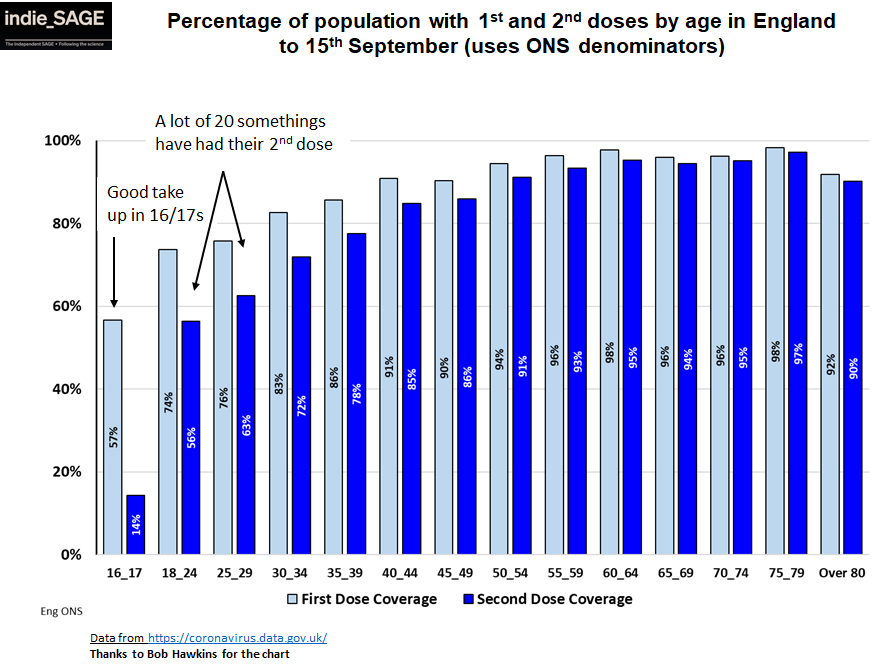
Now some less good news... Hospital admissions have fallen slightly this week (good) but remain relatively high, as does hospital occupancy at just over 6,000 inpatients. 3/10 

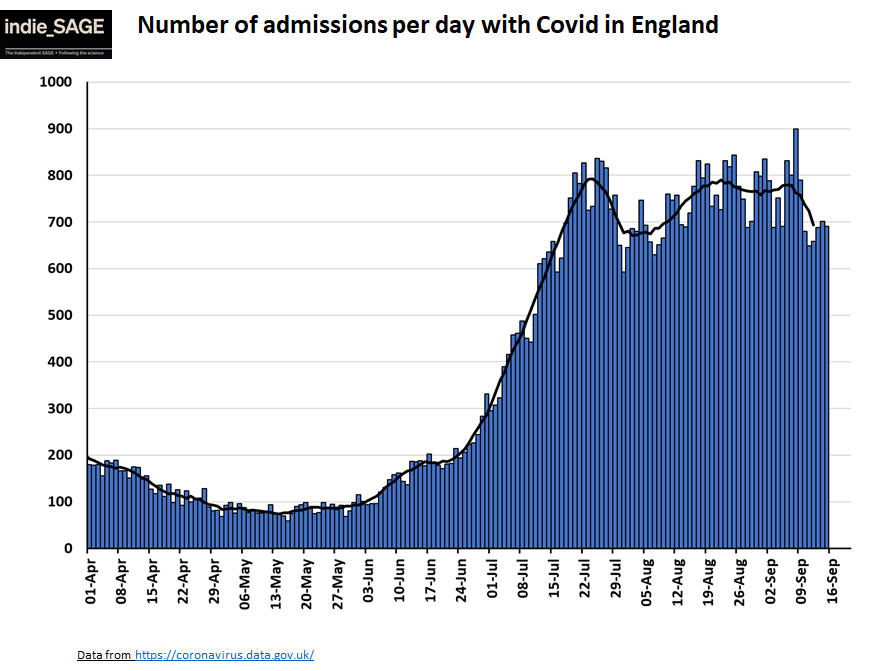

While these nums are way less than Jan peak & ~5% of current occupancy, they are still a lot of patients. And many are very sick and that's a problem.
20% of all critical care capacity right now is Covid patients & that restricts a strained NHS ability to do other work. 4/10

20% of all critical care capacity right now is Covid patients & that restricts a strained NHS ability to do other work. 4/10


We have plateaued at ~110 deaths a day reported in England - that's a lot and 6x higher than this time last year before we had vaccines... This shouldn't be the new "normal"
see @HelenRSalisbury & @martinmckee 's BMJ blogs
bmj.com/content/374/bm…
blogs.bmj.com/bmj/2021/09/14… 5/10
see @HelenRSalisbury & @martinmckee 's BMJ blogs
bmj.com/content/374/bm…
blogs.bmj.com/bmj/2021/09/14… 5/10

So to cases... these have fallen in England this past week - which is good but positivity rates have been falling *much* more slowly, which suggests that at least part of this drop is reduced testing.
ONS infection survey to 11 Sept also found flat (but high!) cases. 6/10


ONS infection survey to 11 Sept also found flat (but high!) cases. 6/10
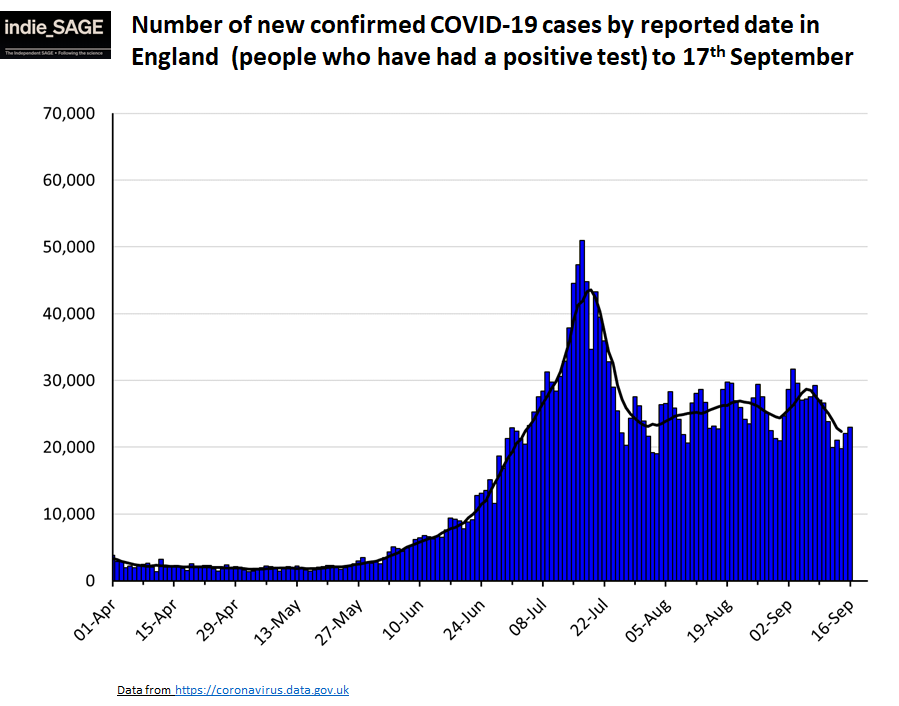
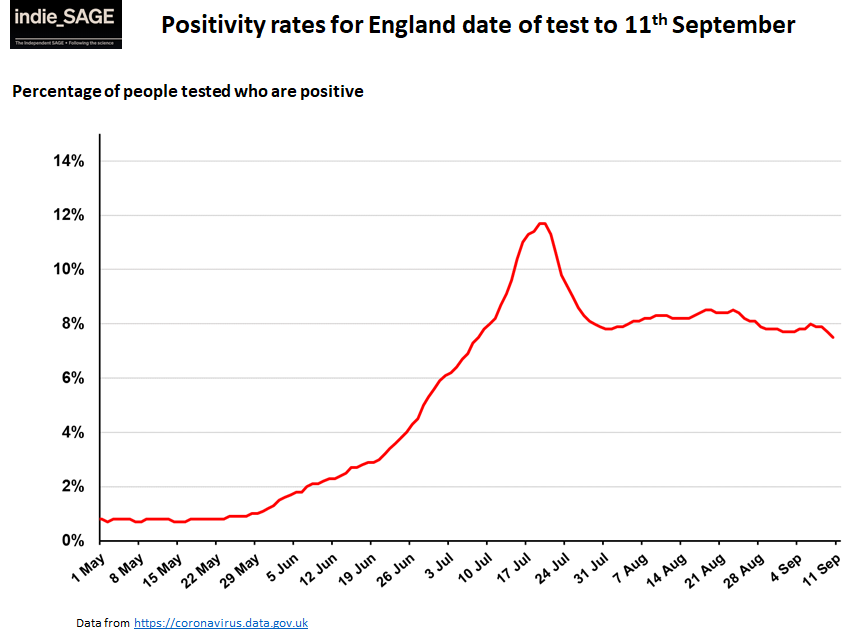

If we look at ages, cases are highest & flat or rising in 5-15 year olds (as are their positivity rates)
Falling a lot in 20-29 yr olds (vaccination?!) and flat or falling in 30+. Hopefully combo of hot weather, high vax, many still being cautious.
But what's that hotspot?7/10


Falling a lot in 20-29 yr olds (vaccination?!) and flat or falling in 30+. Hopefully combo of hot weather, high vax, many still being cautious.
But what's that hotspot?7/10
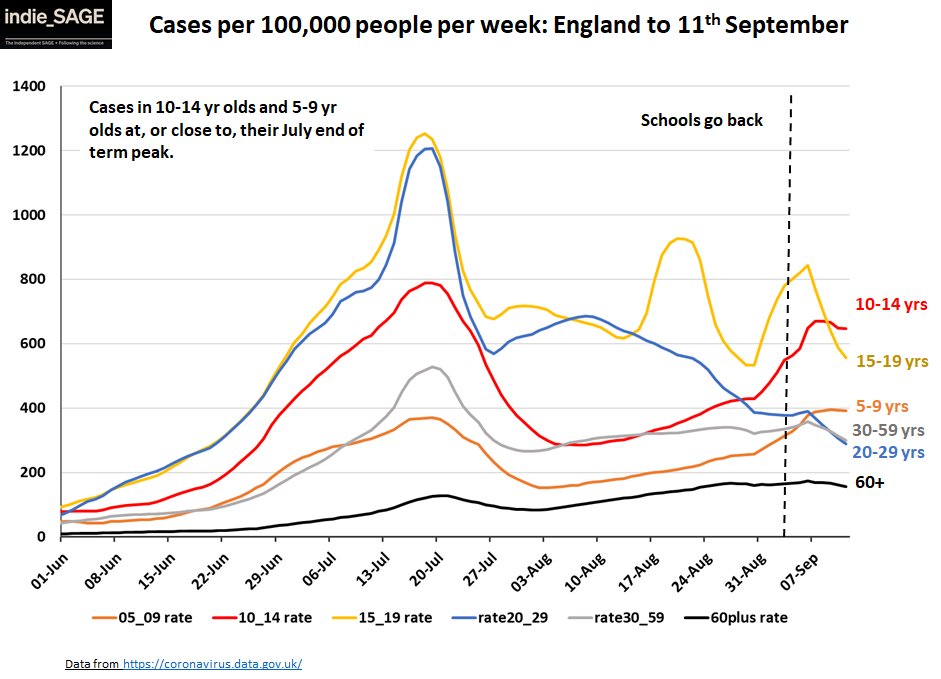


Highest cases in country right now are in Leicestershire - where schools went back a bit earlier on 23rd August.
Cases in 5-15 year olds there are soaring while falling in other young adults and flat in older adults (for now). 8/10
Cases in 5-15 year olds there are soaring while falling in other young adults and flat in older adults (for now). 8/10
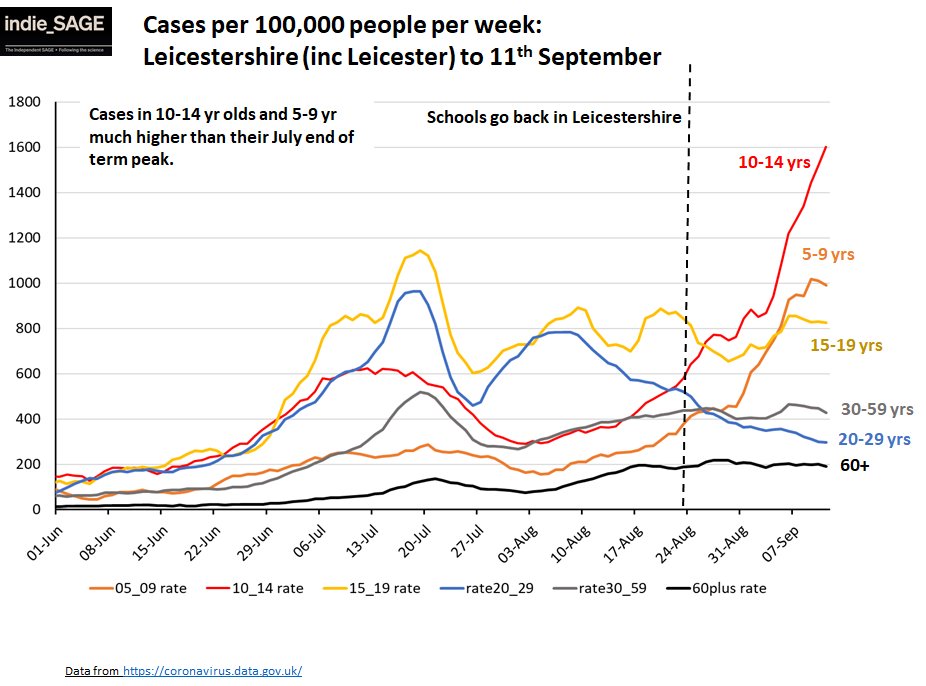
So what does autumn hold? Well SAGE are worried that schools + uni + return to workplaces could lead to more sustained high cases.
They suggest some simple things that could be done NOW to prevent this.
assets.publishing.service.gov.uk/government/upl… 9/10
They suggest some simple things that could be done NOW to prevent this.
assets.publishing.service.gov.uk/government/upl… 9/10

@IndependentSage also have a 9-point plan to prevent a new spike - and that also keeps the economy open.
independentsage.org/wp-content/upl…
Govt is currently doing very little to prevent the pandemic worsening. They didn't listen to SAGE (or us) a year ago - let's hope they do now! 10/10
independentsage.org/wp-content/upl…
Govt is currently doing very little to prevent the pandemic worsening. They didn't listen to SAGE (or us) a year ago - let's hope they do now! 10/10

• • •
Missing some Tweet in this thread? You can try to
force a refresh























